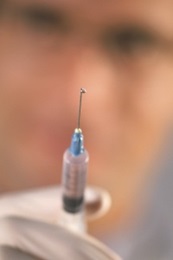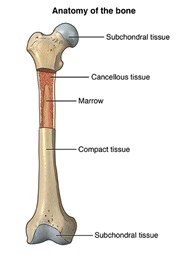Percutaneous Needle Tenotomy for Tendon Injuries
If you suffer from tendon injuries, you are not alone. They are remarkably common, especially among athletes and the elderly. Tendon injuries often result from excessive strain, overuse and microtraumas that compromise the tendon’s ability to heal. Living with painful tendons may impact your quality of life by preventing you from being as active as you’d like.
Most tendon-related problems get better with treatments such as physical therapy, ice, heat, orthotics or splinting, and corticosteroid (anti-inflammatory) injections — and patients can get relief from over-the-counter pain relievers and sufficient rest. But when those treatments don't cut it, percutaneous needle tenotomy may be an option.
While percutaneous needle tenotomy has only been around for 10 years, the procedure is becoming mainstream medicine and a standard of care for patients struggling with tendon pain.
What is percutaneous needle tenotomy?
Percutaneous means “affected through the skin,” and tenotomy means cutting or removal of tendon tissue. Percutaneous needle tenotomy is a procedure to pierce the damaged parts of the tendon with a needle through the skin under ultrasound guidance. The goal is to promote the body’s healing response.
The doctor starts by numbing the area, which may cause mild discomfort. The entire procedure takes 15 to 20 minutes, and you can go home the same day. Any pain you have after the procedure should subside within a few days.
There’s a pinch and a burn when the numbing medication is injected. A small needle is moved through the affected tendon to disrupt and remove damaged tissue while leaving healthy tissue intact.
How does percutaneous needle tenotomy work?
Tendons don’t get a lot of blood supply and they use less oxygen than muscles. The idea of this procedure is to produce inflammation, break up scar tissue and increase blood flow to the tendon by repeatedly piercing the damaged tissue with a needle. This allows the body’s own cells to begin the process of rebuilding the tendon.
The fresh, oxygenated blood produced by percutaneous needle tenotomy can trick the body into thinking that a decades-old nonhealing injury is a new injury. And the body sends its healing resources to the affected area to repair this injury. The procedure can break up calcium deposits in the tendon as well.
Who can benefit from percutaneous needle tenotomy?
Percutaneous needle tenotomy is appropriate for people of all ages and activity levels. It can be especially helpful for people who may not be candidates for surgical tendon repair.
First developed for tennis elbow, percutaneous needle tenotomy is now used to treat pain and injures affecting a variety of tendons and tissues:
- Elbow tendon injuries, including tennis elbow and golfer’s elbow, which happen when the tendons in your elbow are overtaxed, usually due to repetitive motions of the wrist and arm
- Rotator cuff injuries, which affect the tendons that help move your shoulder joint
- Plantar fasciitis, inflammation of the thick band of tissue that supports the arch of your foot
- Patellar tendon injuries, including runner’s knee and jumper’s knee, which affect the tendon that attaches the kneecap to the shin bone
- Hip tendonitis, painful inflammation of tendons in the hip
- Achilles tendonitis, inflammation of the Achilles tendon that connects the calf muscles to the heel bone
Recovering After a Percutaneous Needle Tenotomy
Since percutaneous needle tenotomy is a simple procedure, recovery tends to be quick. Most patients return to their usual activities within 6 to 8 weeks.
You may feel a little pain from the procedure, but it typically goes away within a couple of days. Doctors recommend early range-of-motion and strength training exercises after the procedure to encourage the inflammatory process and help with recovery.
Working with a physical therapist can help you get back to your desired activities safely after a needle tenotomy. He or she can guide you through exercises that help rebuild strength in the affected tendon and teach you techniques to prevent re-injury.
You can take over-the-counter pain medication if you experience pain after the procedure, but you will want to avoid anti-inflammatory medications and ice. The success of percutaneous tenotomy relies on the body’s natural inflammatory response, so it’s important to avoid anti-inflammatory medications during the weeks before and after the procedure.
How long do percutaneous needle tenotomy effects last?
Studies show that pain relief and functional improvement may last for up to three years after percutaneous needle tenotomy. But for some people, the pain returns due to the underlying condition or a new injury. You may choose to repeat the procedure if you experienced good results the first time.






